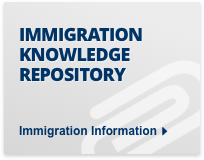Support migrant centric journalism today and donate

 • Media Center » Video Immigration News
• Media Center » Video Immigration NewsAccording to a recent Labour Force Survey study from Statistics Canada, immigrants who have lived in Canada for less than five years had the most difficulty integrating into the labor market. However, the study showed that the longer immigrants stay in Canada, the better they fared in the labor market -- an expected reflection of their integration into the Canadian work force over time.

The report compared working age immigrants between the ages of 25 and 54 with their native-born counterparts. It found that many newcomers may need time to adjust to their new life in Canada and break into the labor market.
In 2006, the national unemployment rate for recent immigrants was 11.5 percent, compared to 4.9 percent for the Canadian-born population.
The situation improved for immigrants who had been in Canada between five and ten years. Immigrants in this category had an unemployment rate of 7.3 percent. Unemployment levels for immigrants in Canada for more than ten years were on par with their native-born counterparts.
Different areas of Canada had varying unemployment rates for recent immigrants. Alberta and Manitoba, with their strong labor markets, experienced the highest rate of employment for recent immigrants.
The unemployment rate among newcomers who landed in Alberta between 2001 and 2006 was 5.8 percent during last year -- less than half the national average for this group.
In an Edmonton Journal article, Michael Haan of the University of Alberta's sociology department said that Alberta's low unemployment levels could help the province's labor shortage by luring immigrants away from traditional destinations such as Toronto, Montreal, and Vancouver.
"This can only be a good news story for Alberta," he said. "Given that a good part of settlement choices are based on word of mouth, it won't take long for an immigrant in Toronto to find out his or her cousin in Edmonton is doing better."
However, Haan said that the statistics do not reveal what kind of work newcomers are engaging in.
"What the figures aren't capturing are whether a person is appropriately employed," Haan said. "I suspect you'll see many of [these educated people] driving taxis."
The report touched on the difficulties immigrants face in getting overseas professional credentials and qualifications recognized, although the government has been working towards a solution to this problem on the federal and provincial level.
"This has been a long-standing and complex challenge for immigrants and refugees for 25 years," Alice Colak, director of immigrant and settlement services at Catholic Social Services in Edmonton, told the Edmonton Journal.
Fortunately for immigrants, Alberta's labor shortage could tilt the balance in their favor.
"Employers require that elusive thing called 'Canadian work experience,' but in Alberta with the labour shortage, employers seem to be less stringent around that," Colak said.
While recent arrivals may find it harder to find work, Colak says the statistics are hopeful.
"A lot of people see hope because they do see immigrants who succeed," she said. "There's a lot of frustration but there are a lot of success stories."





















